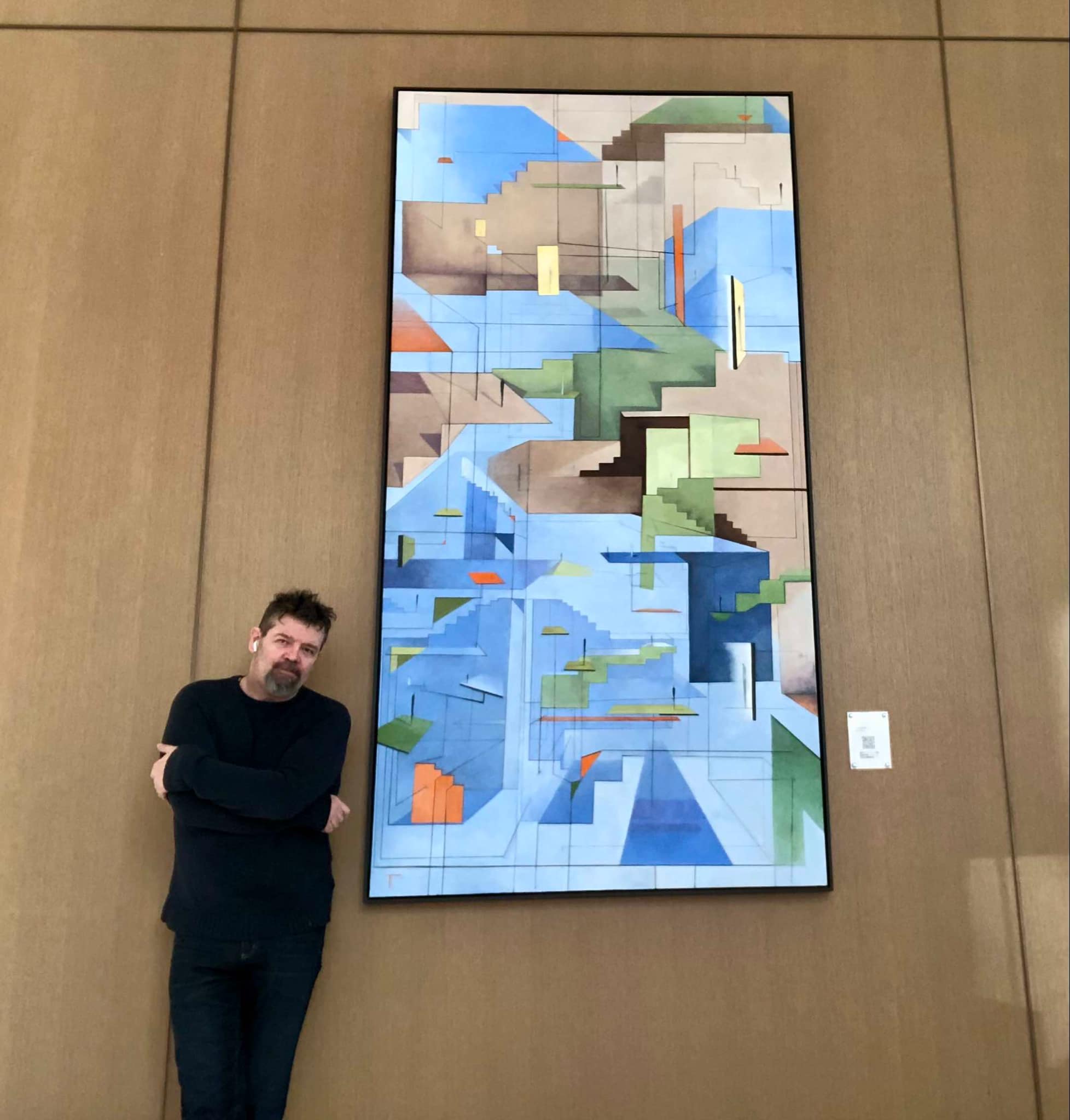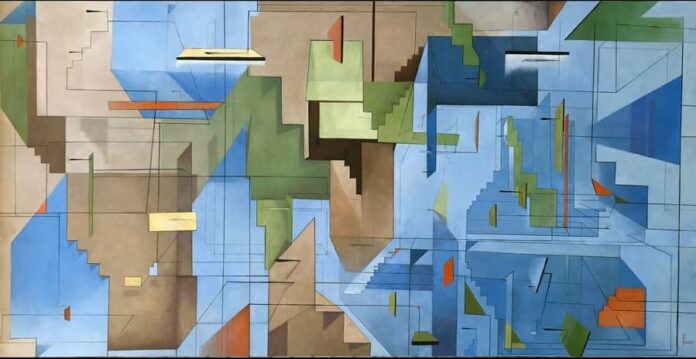In an era where visual language increasingly intersects with philosophical inquiry, JT Thompson emerges as a compelling voice in contemporary art. A visual artist specializing in geometric surrealism, Thompson creates work that invites deep reflection, engaging viewers in meditative encounters with space, structure, and transformation. His ongoing Labyrinth Series exemplifies this ethos—compositions that challenge perception and encourage introspective journeys through richly layered, multidimensional forms.

Art at the Edge of Reality
At the core of Thompson’s practice lies a fascination with liminality: the threshold between known and unknown, between internal experience and external form. His canvases do not merely depict abstract ideas—they architect immersive environments. Through interwoven geometric planes, gradients of color, and precisely placed negative space, he constructs visual narratives that exist in the in-between. These are not static compositions but living fields of tension and balance, where opposites coexist—chaos and order, motion and stillness, clarity and ambiguity.
Inspired by sacred geometry and philosophical traditions spanning from Platonic ideals to Eastern metaphysics, the artist’s work serves as both aesthetic experience and meditative tool. His forms often resemble ancient symbols, mathematical models, or imagined architectures, suggesting that the mysteries of the universe might be encoded within symmetry, proportion, and light.
The Labyrinth Series: A Portal to Introspection
Nowhere is JT Thompson’s vision more fully realized than in his Labyrinth Series—a body of work that transforms abstract geometry into a deeply personal, even spiritual, journey. The labyrinth, historically a symbol of pilgrimage and inner exploration, becomes in his hands a visual metaphor for cognitive and emotional passage. Each piece within the series invites the viewer into an unfolding narrative—one that resists linear storytelling and instead celebrates experiential depth.
This series leverages color and pattern not just for visual impact, but for conceptual resonance. Repetitive motifs suggest cycles of growth and dissolution, while architectural precision anchors the compositions in a sense of sacred space. Viewers may find themselves drawn in—step by step, shape by shape—into what feels like a dialogue with the unknown. In this way, Thompson acts not merely as artist, but as guide.
Public Art and Recognition
JT Thompson’s unique vision has not gone unnoticed. His works have been included in Oxford University Press publications, affirming his relevance in both the art and academic spheres. Additionally, his art has been featured in public commissions that seek to embed aesthetic inquiry into the everyday rhythms of city life.
One such piece now resides in the Hilton Tower Columbus Downtown Public Collection. This painting stands as a testament to Thompson’s belief that art can transform shared space into a site of contemplative engagement. With layered hues and shifting geometries, the composition echoes the rhythm of the city itself. It does not merely hang as décor—it interacts with the urban pulse, inviting guests, commuters, and passersby into a realm of fluid perception.
As viewers approach the work, they are drawn into its subtle complexity. The piece acts as both mirror and portal, reflecting the transitions of daily life while offering an invitation to slow down, observe, and reflect. Its labyrinthine structure does not seek to confuse, but to center—to create a sense of groundedness within the ever-moving dynamics of public space.
Recognition and Expansion
The artist’s contribution to contemporary art was recently acknowledged with a Greater Columbus Arts Council grant, further enabling him to develop new works and expand his studio practice. This support has catalyzed new collaborations with galleries and institutions, positioning Thompson as a rising force in geometric and conceptual abstraction.
These partnerships allow his work to reach broader audiences, ensuring that his art continues to bridge individual introspection with collective experience. Whether viewed in the solitude of a gallery or encountered in the flow of a public corridor, his paintings retain their magnetic, meditative quality.
Geometry as Language, Color as Emotion
In JT Thompson’s visual lexicon, geometry becomes a language, and color becomes emotion. His carefully plotted compositions are never cold or mechanical. Rather, they exude warmth, depth, and a quiet sense of wonder. The precision of his forms is balanced by an intuitive use of color—blues that breathe, oranges that pulse, and gradients that glide like memory across the canvas.
It is this unique interplay that gives his work its emotional gravity. Each piece operates like a visual mantra—anchoring the viewer while inviting mental and emotional movement. The result is a rare duality: paintings that are at once intellectually stimulating and viscerally calming.
The Road Ahead
As JT Thompson continues to evolve his practice, the core elements remain clear: a dedication to inner and outer exploration, a belief in the transformative power of visual art, and a mastery of form that reflects the complex beauty of human perception.
His works are not merely to be seen, but to be experienced—to be entered, like the labyrinth itself, with openness and curiosity. In a world saturated with distractions and surface-level engagements, artist offers something profoundly different: a pause, a passage, a point of connection.
For those willing to look beyond the surface, JT Thompson’s art offers more than aesthetic beauty—it offers a guide through the shifting terrain of reality itself.


